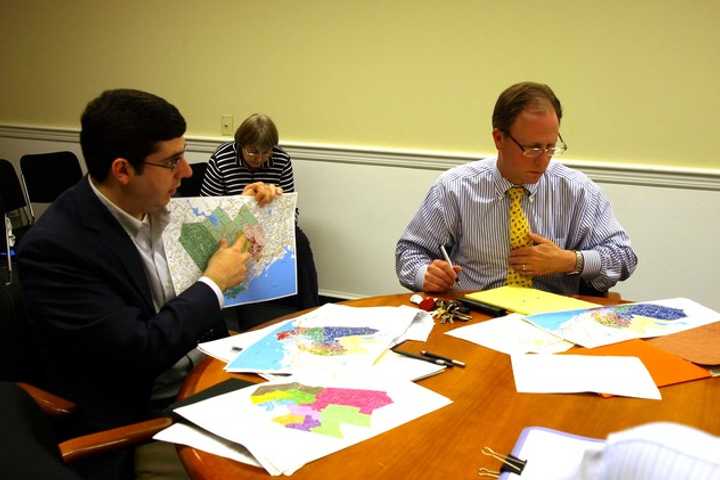“We just seem to be spinning our wheels,” Redistricting Committee chair Hank Ference told the rest of the Representative Town Meeting last week. “I regret to inform you that this committee is, in my opinion, deadlocked.”
In late 2011 the state General Assembly redrew the district lines for the state House of Representatives and the State Senate to conform to the 2010 Census. Fairfield now needs to change its own district lines to better fit the new state boundaries by June, according to state law.
The six-member bipartisan Redistricting Committee started meeting in March 2012. The three Democrats and three Republicans on the committee split over how many districts the town should have. Democrats favored keeping the current 10 districts, while Republicans wanted to shrink the number to eight.
The change would affect the number of polling places Fairfield would need to run each Election Day, and could also change the makeup of the Representative Town Meeting, Fairfield’s legislature. Currently each district has its own polling place and five RTM members. Republicans currently outnumber Democrats on the body 28-22, and five of the 10 districts are represented by one party exclusively.
Republicans argued that fewer districts would mean savings to the town, cutting the amount of poll workers and equipment needed for each election. Democrats said that the larger districts would make it more difficult to campaign door-to-door, and would limit each Fairfielder’s proportional representation in the RTM.
Republican members of the committee suggested bringing two plans to the full RTM and letting the entire group decide. But town attorney Stanton Lesser said last week that he believes the Town Charter specifies that the committee has to agree on a single plan by itself before a full RTM vote.
“Voting districts of the Town shall be established by an ordinance proposed by a committee of the RTM composed of an equal number of members from each party such that the population deviation from the largest to the smallest voting district shall not exceed 10 percent,” the charter reads.
It is not clear what penalties the town could face if it does not draw new district boundaries by the state’s June deadline. But keeping the current setup could potentially cause confusion in this November’s elections.
Because the committee did not reach an agreement before the 2012 election, the Registrars of Voters needed to run 21 different voting lines across the 10 current districts to give each State House of Representatives district its own distinct line at each polling place. As a result the Registrars needed to hire extra staffers to manage the extra lines.
The committee last met on Feb. 12. The group does not yet have a time or date scheduled for its next session.
Click here to follow Daily Voice Fairfield and receive free news updates.
